PROS
This tool gives you a convenient way to open boxes, sharpen blades and saws and even open bottles. The small size lets you keep the tool right on your key ring and take it with you everywhere.
BEST CHAINSAW
SHARPENER 2019
BOTTOM LINE
With this file set, you can keep everything you need to sharpen your chain nearby. Many shoppers like that the pouch has a roll-up design that reduces the amount of space the set takes up in their pockets and boxes.
PROS
Included inside this roll-up pouch are multiple tools that you can use for sharpening and maintaining your chainsaw and saws. You get both a round file and premium file with a flat edge for working on smaller teeth.
CONS
The quality of this set isn’t quite up to par, which led to some customers complaining about the files bending or breaking. Some reviews claimed that not all of the files worked with their chains.
BOTTOM LINE
Designed for use anywhere, this chainsaw sharpener mounts easily onto most surfaces and has a portable design that lets you take it to job sites. You can pull the chain straight through and sharpen it faster with minimal work on your part.
PROS
As a bar-mounted option, this sharpener is perfect for mounting on a surface in your garage or workshop to give you added stability as you sharpen. You can adjust the angle and length based on how you want to sharpen your chains.
CONS
Many customers found that this sharpener had a steep learning curve and that it took some time for them to feel confident using it. Some also claimed that it didn’t work as well as a standard file does.
BOTTOM LINE
The best electric sharpener is this one, which features a motor with an RPM rating of more than 4,000 revolutions per minute. You can work quickly and still stay safe because of the built-in safety guide.
PROS
Thanks to a safety guide, this model keeps your hands away from both the motor and your chain. It comes with rollers that let you quickly rotate the chain to work on multiple teeth in a short period of time.
CONS
The lack of included instructions makes this model hard to use. While it gets generally positive reviews, some customers did think it used some cheap parts.
BOTTOM LINE
No matter what type of chain or blade you need to sharpen, you can use this set and get some great results. The kit comes with multiple files and sharpening tools and a guide for fast setup.
PROS
This kit comes with all the tools and files that you need for sharpening tools at home or on the job. You can select the right tool for any job and keep all the parts safely stored in the kit.
CONS
Working with manual tools like this set takes longer. A small number of customers complained about the quality of the tools and the materials used.
BOTTOM LINE
As the most compact sharpening tool on the market, this little key ring device is perfect for using while away from home. It comes with other tools too, including a bottle opener and a sharp edge for opening boxes and packages.
PROS
This tool gives you a convenient way to open boxes, sharpen blades and saws and even open bottles. The small size lets you keep the tool right on your key ring and take it with you everywhere.
CONS
The small size of this sharpener makes it hard for some to use. Some of the reviews we came across stated that a few of the included tools didn’t work as well as others.
A chainsaw can be one of your best friends or one of your worst enemies. When you have the best chainsaw sharpener handy, you’ll keep that chain as sharp as possible. This helps you cut through old tree limbs and anything else you might have around your home. Choosing from the best chainsaw sharpener 2018 products is tough, which is why we did it for you. Our shopping guide goes over the top chainsaw sharpener 2018 models and designs to help you find one that will work for your needs.
Using a chainsaw with a rusty or dull chain is potentially dangerous. Not only can you harm yourself, but you can harm anyone else nearby when you use that power tool. Working with an old chain that is too dull can make a simple project take much longer too. As you read through our shopping guide for chainsaw sharpeners, you’ll find more than just a few products that you can buy. You’ll also find the benefits of using a sharpener and how much you should pay for one. We also included some tips on using a sharpener for your chainsaw and the top features of the best products.
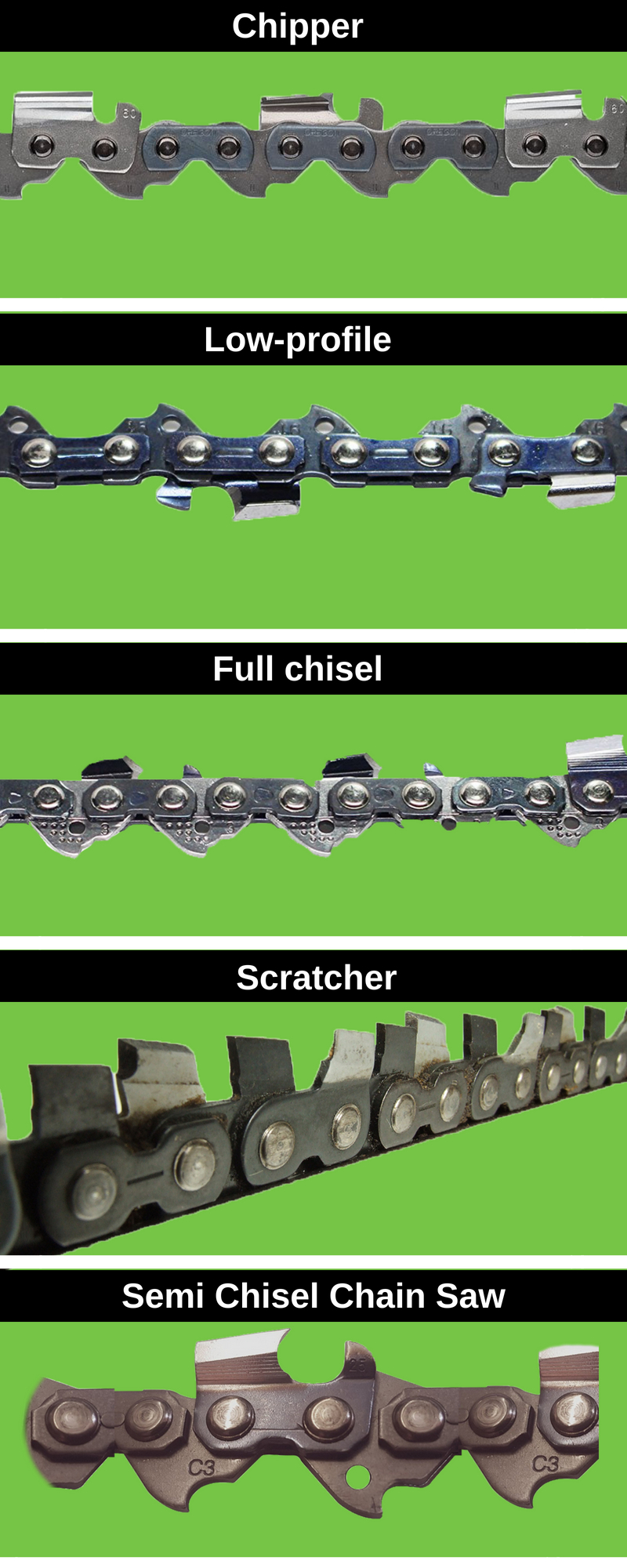
The next time that a storm downs some tree limbs in your yard, you should take a few minutes and inspect your chain before firing up your saw. As the teeth wear down, you must sharpen each one. Depending on the type of saw you have and how you use it, you may find that you need to sharpen all teeth or just a few of those teeth. Having the right tool for that job will make the task of sharpening your chainsaw much easier. That is why we created a list of the best sharpeners on the market and some tips on using each one.
Before working on this list, we first identified the different types of sharpeners. You can learn more about those types below and see the pros and cons of each type too. We then found at least one sharpener in each category listing. Our list started out with a number of different tools, but we looked at reviews to weed out those that don’t work well. We then ranked those tools based on both customer reviews and our own experiences. Our shopping guide provides you with the top chainsaw sharpeners and information on using one.
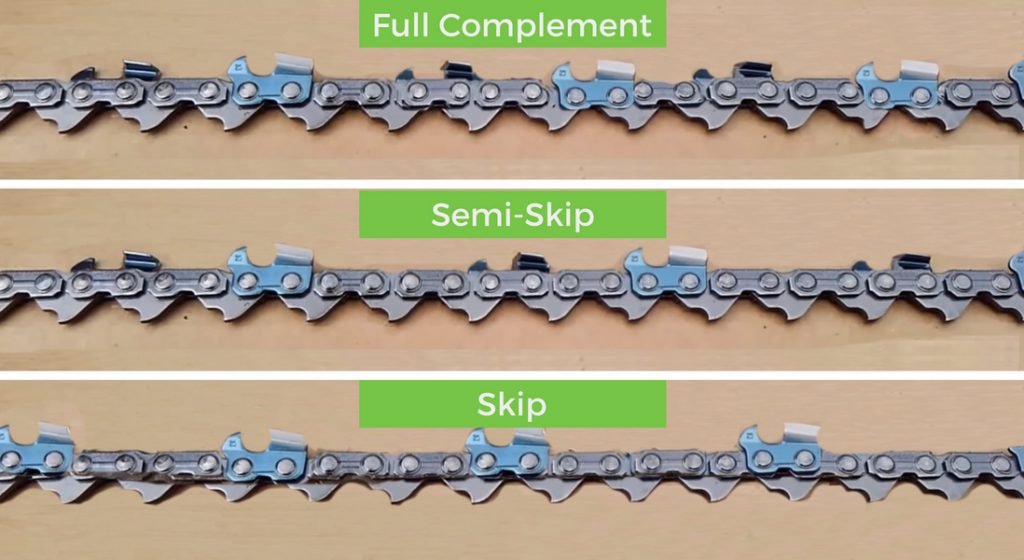
A chainsaw sharpener, also called a chainsaw chain sharpener or a chain sharpener, is essentially a tool that you can use to keep the teeth on your chain sharp. If you ever used a chainsaw with a dull chain before, you know how difficult using that tool can be. Not only do you have less control than you should, but you may find that you need to work extra hard to cut through something as simple as a thin piece of plywood. Those teeth must work together to cut through the material in front of them. With the right saw and a sharp blade, you can tackle both wood and metal as well as other materials.
Some people think that they need a bigger or more powerful chainsaw because the ones they used in the past don’t cut very well. Simply sharpening the teeth can make the saw more efficient. Sharpeners come in different types that will determine how you use one. Some allow you to run the chain through a machine that does all the cutting for you, while others require more work on your part. You can check out all the different types of chainsaw sharpeners a little further down.
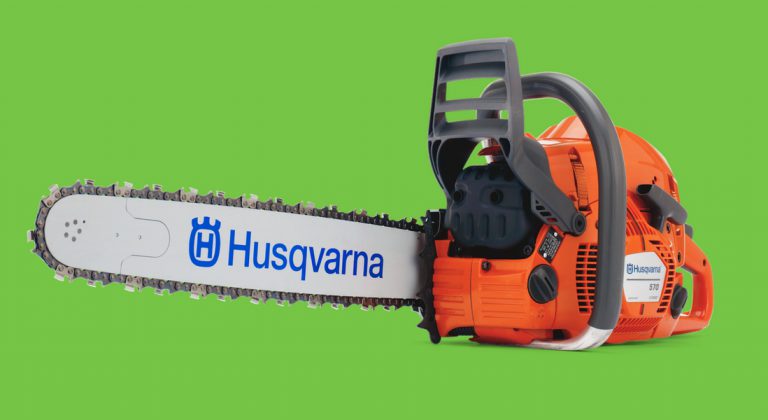
Though there are three different types of chainsaw sharpeners on the market, each one works in a similar way. The concept involves the use of some type of metal to sharpen the teeth on the chain. When using a manual or hand-held sharpener, you’ll run a file across the tooth until you reach the sharpness that you desire. If you use an electric model, you can adjust the settings and let the metal inside do the sharpening for you. There are also mounted options that hold the chain steady as you drag it through a series of files.
All of the different types of chainsaw sharpeners use the same type of metal files or similar files. Some have a rounded design, but other files have a flat design. You can choose the right one based on how you want to file the teeth and how sharp you want those teeth to feel when you finish. Though some prefer the convenient filing and sharpening that electric models offer, others like using manual design because they feel like they have more control. We recommend learning more about each type before deciding which sharpener you should buy.
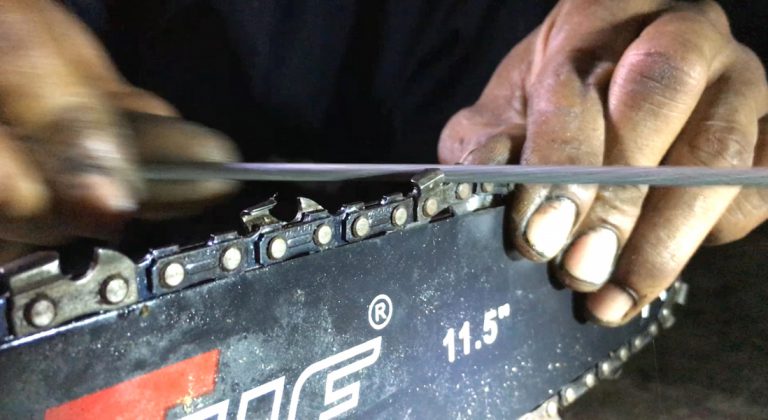
When using manual files, focus on just one tooth at a time. If you attempt to sharpen multiple teeth, you risk scraping the file across your fingers or knuckles.
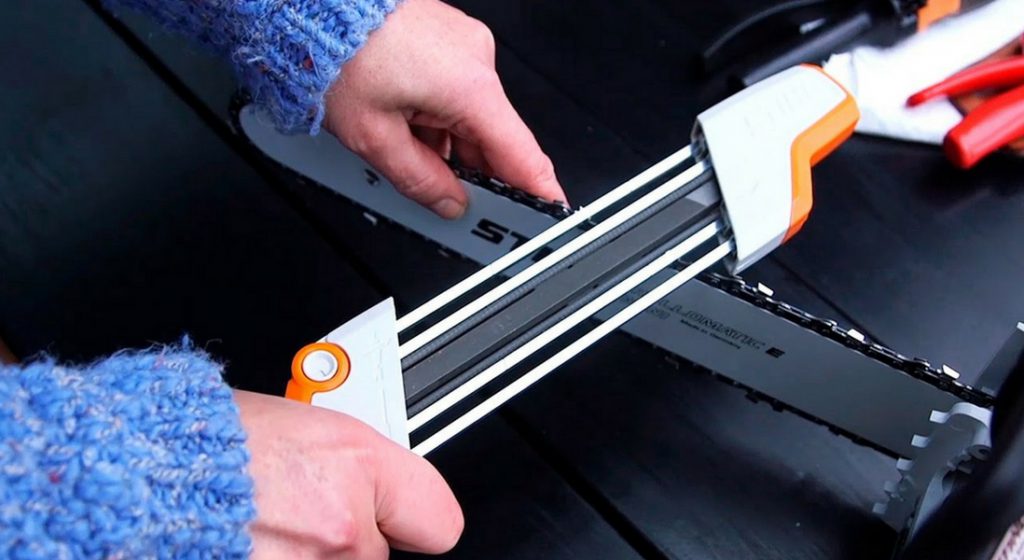
Before you buy a brand new chain or completely replace your old chainsaw, take a look at some of the benefits of sharpening the chain that you already own.
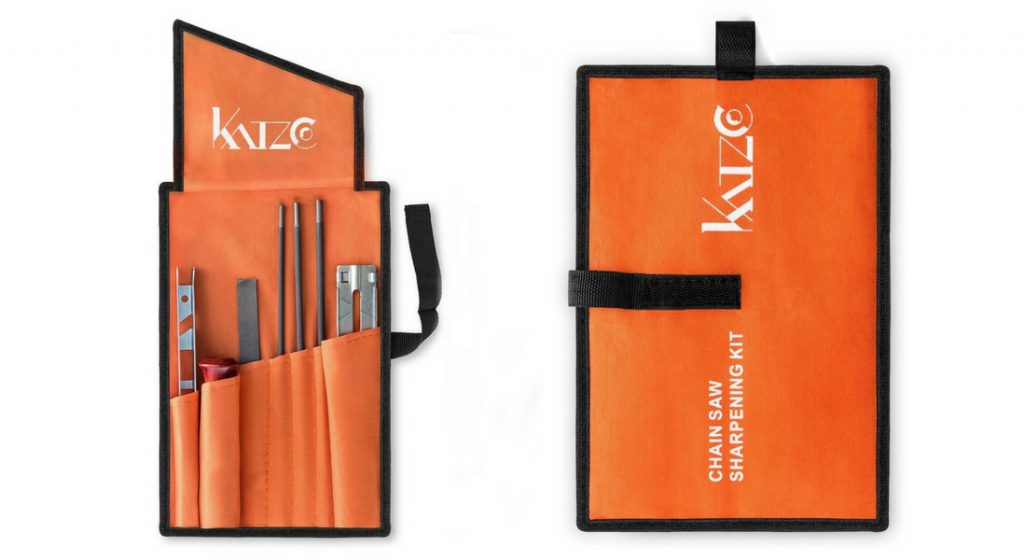
Manual Sharpeners
As the name implies, a manual sharpener is one that you will use manually and with your own hands. These tools also go by the name of hand-held sharpeners. We included two sets of files on our list of the top chain sharpener 2018 products because of the high reviews that those sets received. You can use both rounded and flat files on your chain’s teeth. Most sets also come with a gauge that helps you remove the same amount of metal from each tooth, but you’ll also get detailed instructions that show you how to use each file. Manual sharpeners may come in a hard plastic case or a softer roll-up pouch.
Pros:
Cons:
Electric Sharpeners
Many DIY enthusiasts prefer electric sharpeners to manual models because they want to sharpen their chains faster. These machines usually feature multiple files inside. You can adjust the settings and tell the machine how much metal you want to remove from each tooth or use other factors when sharpening the chain. Using one of these sharpeners is easy too because you can just place the chain inside and run it through the machine. Some of the models we found will work on blades too. You’ll find a guard and other safety features that keep your hands away from the motor and other features.
Pros:
Cons:
Bar-Mounted Sharpeners
A convenient way to sharpen your chains without spending a lot of money is with one of the bar-mounted models. The name comes from the fact that you can mount the device on any surface, but most users mount theirs on either a workbench or a table. You’ll find clamps that let you mount the product onto that surface to keep it from moving. Located on the front is a small opening that lets you insert your chain. You’ll pull quickly to move the chain through the sharpener inside. Many bar-mounted models let you adjust the angle and the depth of your cuts too.
Pros:
Cons:
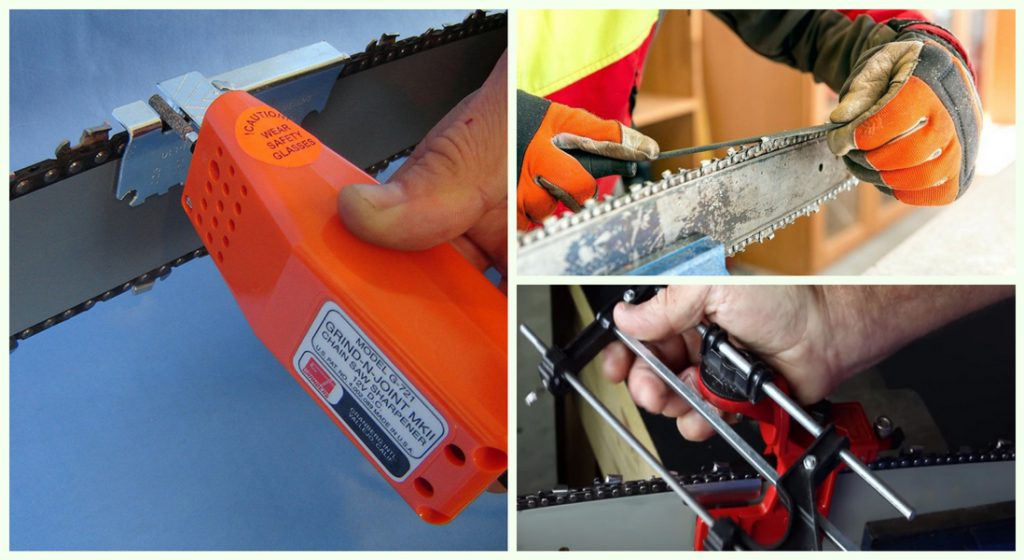
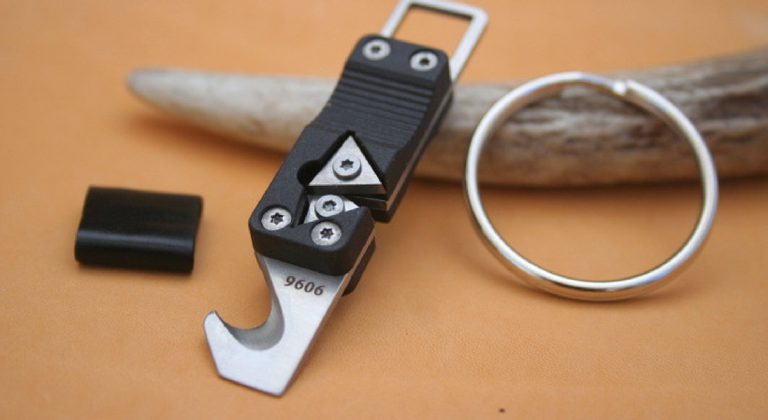
Using a chainsaw sharpener isn’t as hard as you might think. As you read how each one works, you’ll quickly understand what you need to do to use one. We divided this section into two separate areas. The first section goes over how you can use a manual sharpener. You’ll also find out how to use an electric model in the second section. Make sure that you check out our safety tips section to learn how to stay safe when sharpening chainsaw chains.
How to Use Manual Sharpeners
How to Use Electric Sharpeners
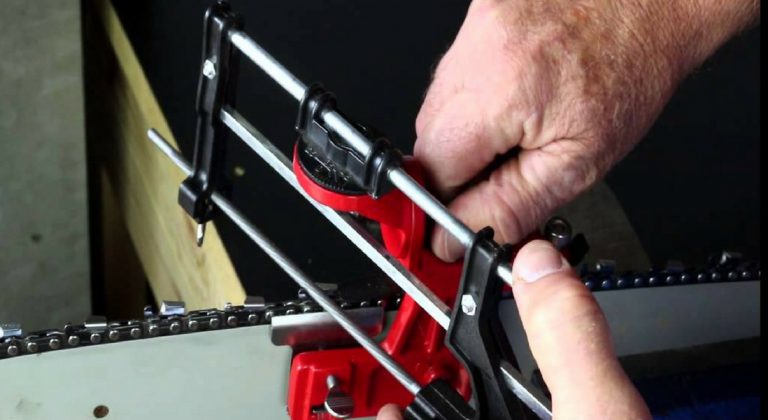
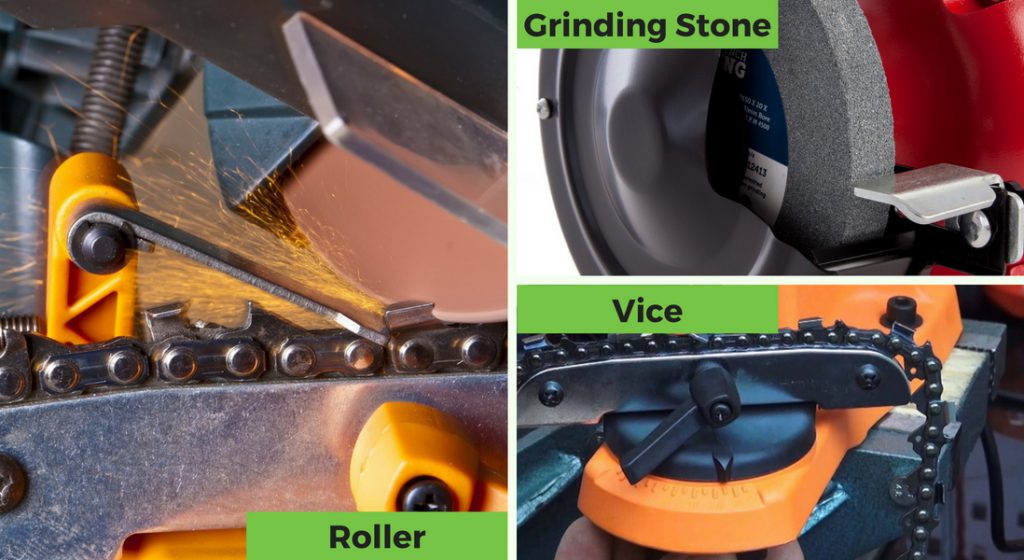
We want you to stay safe when using any type of sharpener, which is why we created a list of tips that you can use when working on your chains.

No matter how careful you are when sharpening a chain, a piece of metal can still come off and land in your eye. There are some simple things that you can do at home to get that metal out.
Those who use chainsaws more often feel more familiar with those tools and will know right away if the chain needs sharpening. If you have less experience, you might confuse a dull blade with a more serious problem like an issue with your motor. You can look at some basic signs that you have a dull blade that needs sharpening before buying a new saw or blade.
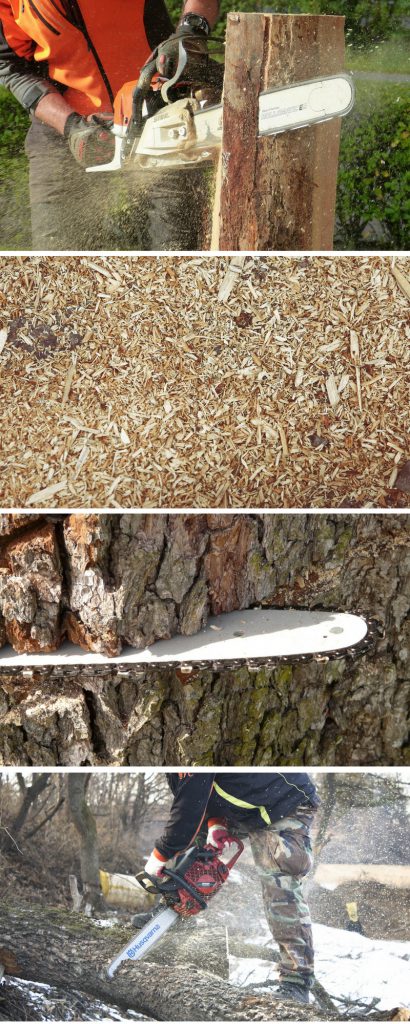
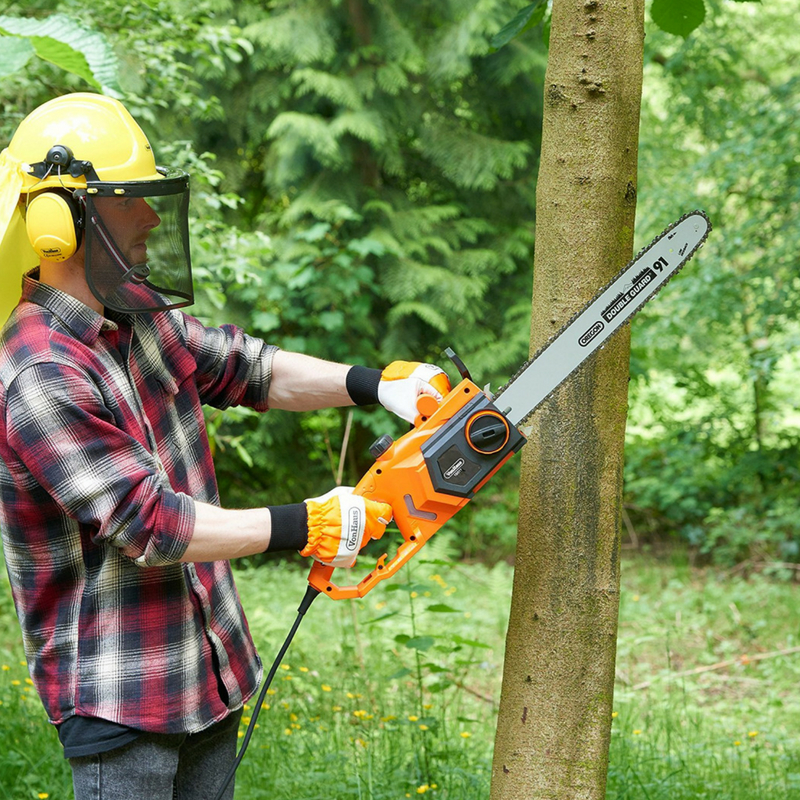
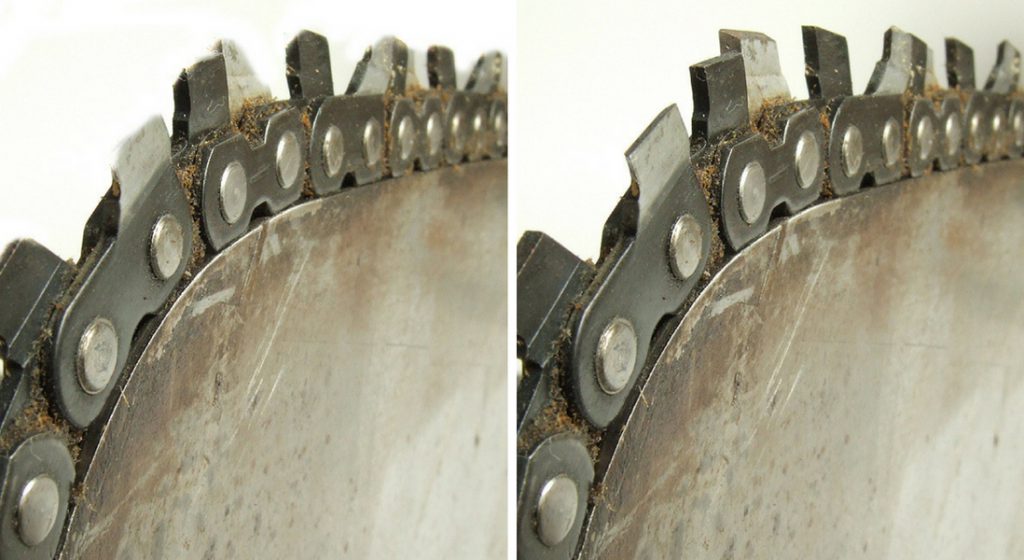
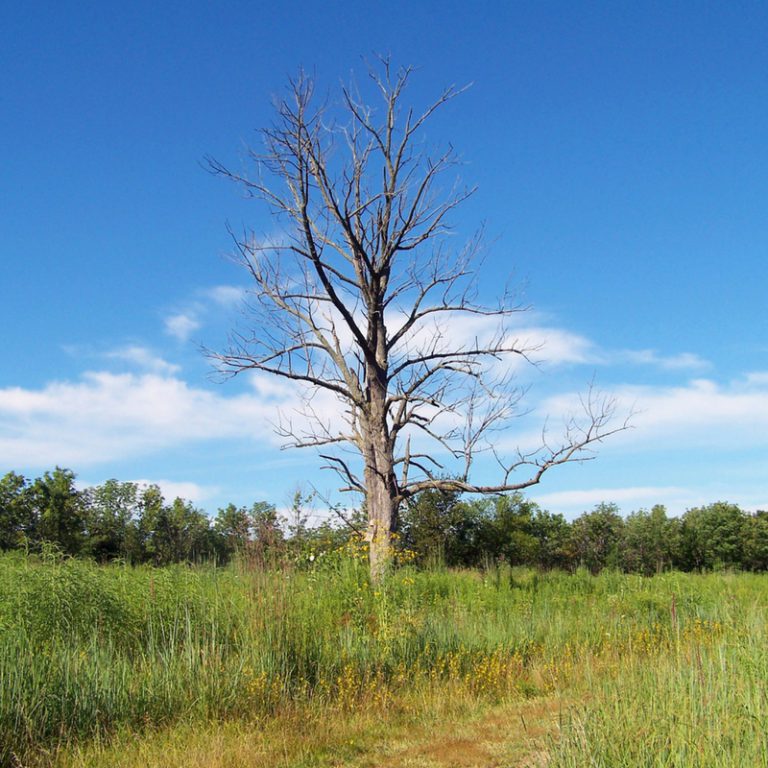
The cost of removing a tree from your home can range from $100 to more than $500. Professionals base the cost on factors such as:
Though we highly recommend each of the top five best chainsaw sharpener 2018 products, we know that you may want to do a little research on your own and check out models from other manufacturers. You might have a chainsaw from a manufacturer like Stihl and decide that you want to use a sharpener from the same company. That is why our shopping guide also includes this detailed buying guide. We already looked at things like the different types of sharpeners and tips on using those models, but we also wanted to give you a list of all the features you should look for and the things you should consider before you buy.
Power and Speed
One important feature worth considering, especially when looking at electric models, is the power of the sharpener. RPM stands for revolutions per minute and gives you an idea of how quickly the motor will run. When looking at a product description, you’ll want to see an RPM rating of at least 4,000 or higher. Some manufacturers will also provide you with information about the overall speed and tell you how quickly you can use their machines to sharpen your chain teeth. The faster you can sharpen each individual tooth on your chain, the faster you can get to work outside and take care of any problems around your home.
User Experience
The amount of experience you have will also play a key role in the type of sharpener that you buy. Older DIY enthusiasts and woodworkers often prefer the kits that come with multiple files. They like knowing that they can work on each individual tooth on a chain and that they can take their time. Those with less experience will often find these sets hard to use. You may have issues getting all the teeth to the same height and sharpness. Electric models and bar-mounted models are more popular among those with less experience because they can follow the included instructions and sharpen an entire chain in an hour or less.
Overall Construction
Regardless of what model or type interests you, you should always look at the overall construction and pay special attention to what customers said about that construction. Many of the reviews we found on file sets pointed out that the included tools weren’t very strong. Some customers even complained that the tools bent or broke the first time that they used them. Construction is equally important in regards to electric models. If the rollers sometimes get stuck or the vice doesn’t have a very tight grip, you may have a hard time getting your chain as sharp as you need it.
Power Supply
As you look at the different chainsaw chain sharpeners on the market, you might think that it comes down to those that require a power outlet and those that use no power. You’ll also find a small number of sharpeners that work with batteries too. These tools offer a convenient way for users to sharpen their chains when they’re not near a power supply and when they don’t want to use their own hands. We did not include any of these models on our list because the reviews on them are mixed at best. Many shoppers found that they could sharpen their chains faster by hand.
Chain Type
Near the top of this page are several charts that show you the different types of teeth that modern chainsaws use and the different types of chains that you can use with those saws. Before you spend your money on any of the products on our list or any other sharpener that you want to buy, you must make sure that it is compatible with your chain. If the device is not compatible with that chain, you may find that it actually wears down the teeth or that it breaks off some of those teeth. You can contact the manufacturer of your chain and ask for help.
Durability
If you work with your hands and/or use power tools on a daily basis, you might notice that manufacturers changed their construction processes over the years. Even tools that once used premium parts and solid metal or wood components now feature some plastic pieces. That’s why it’s so important that you consider durability when choosing a sharpener. When writing our reviews on our top products, we created a cons list for each one that includes some of the complaints that customers had. You can use that information for yourself to determine whether a sharpener is durable enough for your use.
Portability
Despite what you might think, not everyone who uses a chainsaw uses it in the same location every day. Professionals need to take their saws to job sites and to the homes of their clients. Even if you just use a chainsaw a few times a year around your yard, you may want to look at the portability of different sharpeners to find one that you can take with you. Manual and hand-held sets are perfect for using outside when you notice that your chain looks a little dull. With the keychain model we found, you can even carry the tool with you on a daily basis. Electric models are less portable and will require an outlet.
Usage
You should give some thought to how and where you will use that sharpener too. If you keep your chainsaw stored in your garage, feel free to invest in an electric model. You can keep it plugged in and ready to sharpen your chain whenever you notice any dull teeth. Many people prefer bar-mounted sharpeners because they can use one indoors or outside. You can set one up in your garden shed to sharpen your chain before working in your garden. Hand-held products are best for those who don’t mind putting in a little manual labor and those who spend a lot of time working in areas without a power supply.
Safety Features
Before you put down your credit card and place an order, take some time to check out all the available safety features. Even if you have years of experience working with chainsaws and sharpening the blades and chains that power tools use, you will still want to ensure that the tools have some features that will keep you safe. The depth gauges that come with hand-held tools are one example of a safety feature. This gauge lets you cut and sharpen to the depth and precision that you need. Electric models often come with a safety guard too. While you can still make all the adjustments that you need, you won’t worry about cutting or hurting your hands.
Included Parts
Looking at what comes in the box and whether you get more than just the sharpener can help you see exactly what you get for your money. With electric sharpeners, you’ll typically get the machine itself and some instructions, though some of the reviews we saw complained that the products lacked any instructions. These products may come with some removable parts that let you make repairs or clean out the machine too. Hand-held sharpeners generally come with the most parts and accessories. You usually get all of the following:
Ease of Use
One of the features that shoppers claim is most important to them is ease of use. Using a chainsaw to cut down a tree takes a lot of work and concentration on your part. You may want to focus more on your cutting and less on your sharpening, which might lead you to an electric model. Electric models usually have a steep learning curve though, and you may not get the detailed instructions that you need. Using a hand-held set requires more concentration and can take weeks of use before you feel comfortable working with those tools.
Model Type
You can look at dozens of features and multiple products without still knowing what you want and need. What it all boils down to is the model type that you like best. Some models are just better for certain users than others are. If you want a tool that you can grab and take with you for sharpening your blade anywhere you work, you’ll prefer a set of hand-held tools. Those who want an easy and convenient way to sharpen their chains will prefer an electric model. Bar-mounted chain sharpeners offer the best of both worlds. You can take the sharpener with you and get similar results as you would with an electric sharpener.

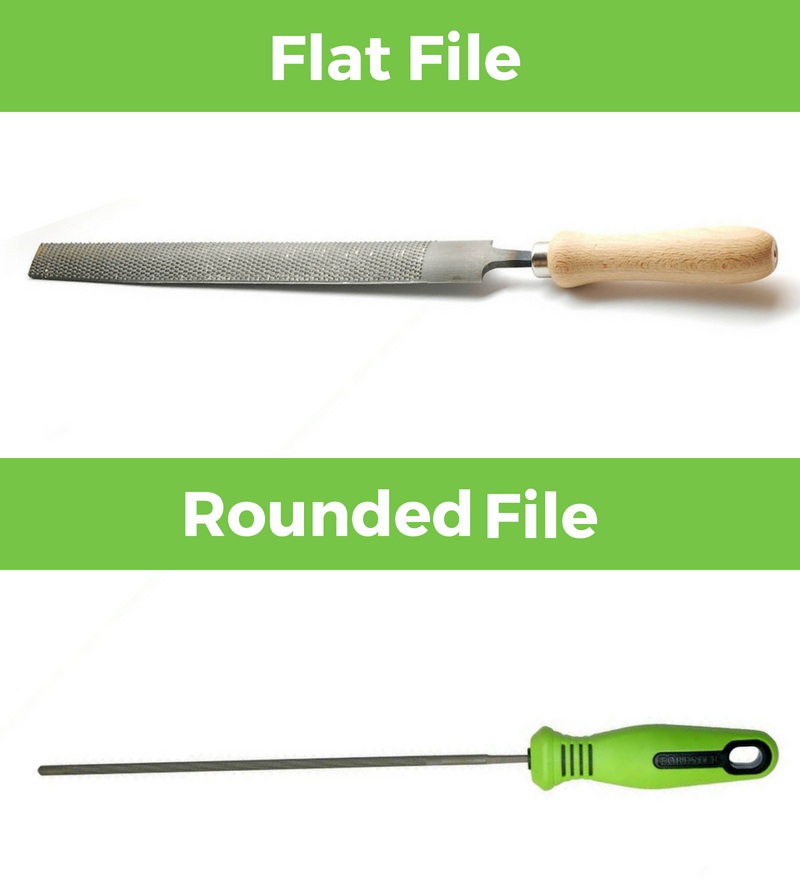
A: The most basic of problems that you’ll have when using a dull blade is that it just doesn’t cut. This can leave you spending more time to cut through a simple piece of wood that it would take to cut that wood with a handsaw. You also risk losing control of the saw and doing damage to nearby areas or hurting yourself.
A: Though some claim that you should sharpen your blade each time that you finish a big job, you can keep track of the amount of work that you do instead. Each time that you use your saw for at least five hours, you should sharpen the chain.
A: In addition to knowing the signs that your chain needs sharpening, you can also look at the teeth on that chain. When you first use a chain, you’ll notice precise edges on each tooth that feels sharp to the touch. Dull teeth will look less sharp and may have uneven edges.
A: You should replace your chain when you can no longer sharpen the teeth. Experts also recommend replacing rusty blades or those with missing teeth.
We have access to thousands of products, and have meticulously and personally hand selected the very best for you to check out.




We are a participant in the Amazon Services LLC Associates Program, an affiliate advertising program designed to provide a means for us to earn fees by linking to Amazon.com and affiliated sites.